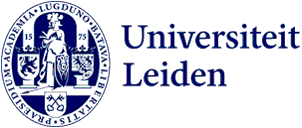
Coring among sheep: investigating a pasture's past
It is late June, and on a windy meadow north of Leiden known as the Vrouw Vennepolder a group of archaeology students just hit the last ice age. Considering this involves manually pushing a ground core to a depth of 10 meters, this is no small feat. Even so, the taking of ground samples in this, at first glance, unremarkable pasture, is only a small part of Leiden University's Living Lab project.
Reconstructing the landscape of the past
Supervised by geoarchaeologist Joanne Mol, the aim of this fieldwork is to reconstruct the landscape of the past. ‘This is all part of the Living Lab project,’ she explains, ‘in which Leiden University, together with the Land van Ons foundation, investigates how to increase the biodiversity of pasture land.’
Generally speaking, the biodiversity of pastures is extremely low in this region. Several organisations now have joined forces to counter this. ‘Our role as archaeologists is of course looking at the time dimension, which offers information on past landscapes and their biodiversity. This may offer options that have not been thought of before.

Breaking records
‘10,20 meters!’ One of the students exclaims as she and a fellow student hang on the coring pole to drive it even deeper into the ground. At a depth of 10 meters one hits the Pleistocene era, the era of the last ice ages. ‘We just broke our record,’ third year Archaeology student Anne grins. ‘This is my first day in this fieldwork, and this is a great start.’
For Jesse, also a third year Archaeology student, this was his last day, and final coring.’This is amazing. It's the first time I have participated in a coring project.’ With this muddy hand he makes a sweeping gesture at the meadow and the grazing sheep, ‘You look around and see a pasture, without a clue what's below the surface. It's fascinating to find out what took place here in the past.’

Time dimension
Archaeology is a relatively late player on the Living Lab table. ‘Initially, the investigators had not considered the possibility to look at the pasture's history,’ Joanne says. ‘Until Professor Wil Roebroeks, member of the research programme Liveable Planet, got wind of the project, and interjected that the Faculty of Archaeology could help out with the time dimension.’
Sensitivity
The coring samples will help create a 3-dimensional map of the ground layers, and archaeobotanical analysis will offer a glimpse into the vegetation at this location in the past. ‘I'm interested to see the results,’ Joanne adds. ‘There is a lot of societal sensitivity involved. This is something we notice in the field too, as we get a lot of attention with our activities here. Normally we archaeologists get the question whether we found gold. Now they ask us if we are taking samples for nitrogen measurements.’
Peat layer
In the final week the students sampled an Early Holocene peat layer just on top of the Pleistocene, in collaboration with Mike Field and Ilse Kamerling. Two students already mentioned that they might like to do pollen analysis on this peat in their thesis project, which hopefully will shed some light on the landscape and settlement options in that period.
Visit the Open Day
On September 4, as an activity during the Fête de la Nature festival, you may see the archaeologists in action. See for more information the event page.

